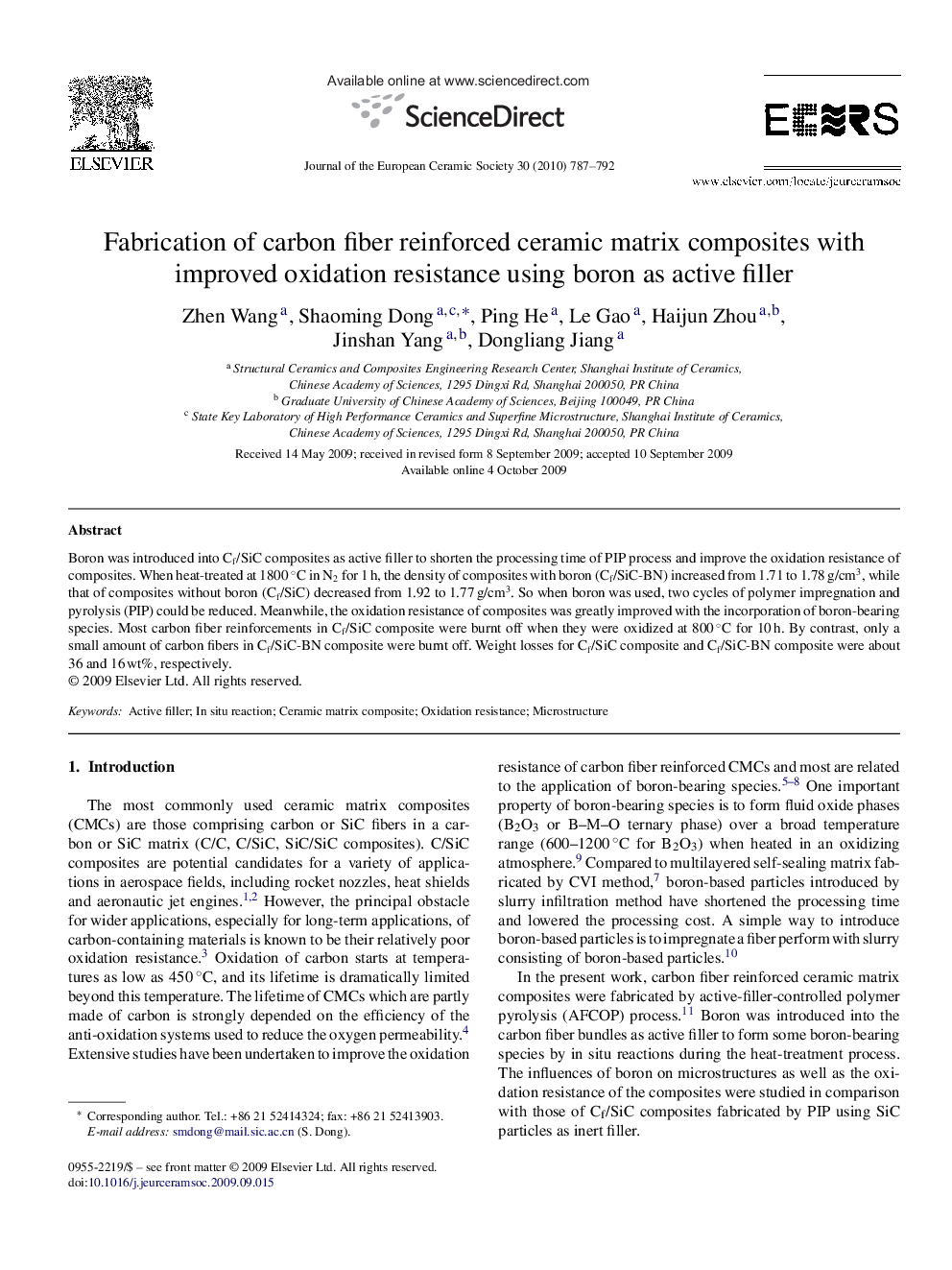| Article ID | Journal | Published Year | Pages | File Type |
|---|---|---|---|---|
| 1474931 | Journal of the European Ceramic Society | 2010 | 6 Pages |
Boron was introduced into Cf/SiC composites as active filler to shorten the processing time of PIP process and improve the oxidation resistance of composites. When heat-treated at 1800 °C in N2 for 1 h, the density of composites with boron (Cf/SiC-BN) increased from 1.71 to 1.78 g/cm3, while that of composites without boron (Cf/SiC) decreased from 1.92 to 1.77 g/cm3. So when boron was used, two cycles of polymer impregnation and pyrolysis (PIP) could be reduced. Meanwhile, the oxidation resistance of composites was greatly improved with the incorporation of boron-bearing species. Most carbon fiber reinforcements in Cf/SiC composite were burnt off when they were oxidized at 800 °C for 10 h. By contrast, only a small amount of carbon fibers in Cf/SiC-BN composite were burnt off. Weight losses for Cf/SiC composite and Cf/SiC-BN composite were about 36 and 16 wt%, respectively.
